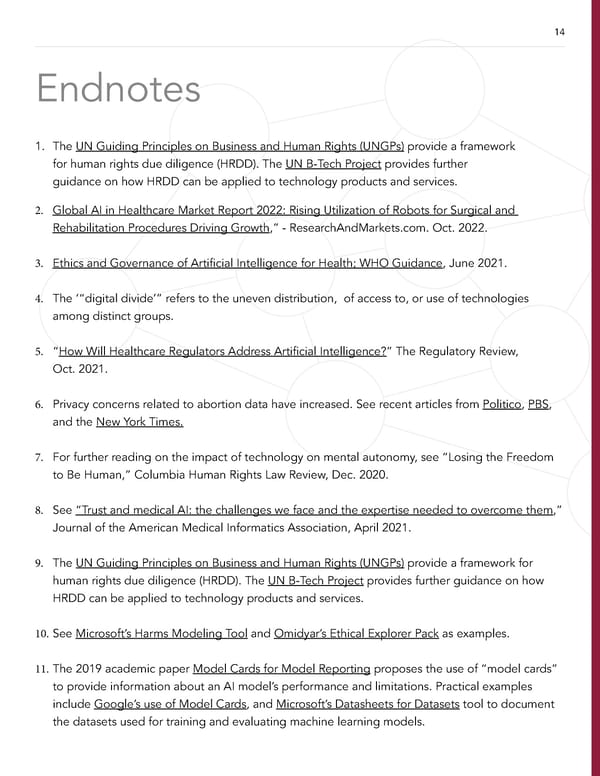14 Endnotes 1. The UN Guiding Principles on Business and Human Rights (UNGPs) provide a framework for human rights due diligence (HRDD). The UN B-Tech Project provides further guidance on how HRDD can be applied to technology products and services. 2. Global AI in Healthcare Market Report 2022: Rising Utilization of Robots for Surgical and Rehabilitation Procedures Driving Growth,” - ResearchAndMarkets.com. Oct. 2022. 3. Ethics and Governance of Arti昀椀cial Intelligence for Health; WHO Guidance, June 2021. 4. The ‘“digital divide’” refers to the uneven distribution, of access to, or use of technologies among distinct groups. 5. “How Will Healthcare Regulators Address Arti昀椀cial Intelligence?” The Regulatory Review, Oct. 2021. 6. Privacy concerns related to abortion data have increased. See recent articles from Politico, PBS, and the New York Times. 7. For further reading on the impact of technology on mental autonomy, see “Losing the Freedom to Be Human,” Columbia Human Rights Law Review, Dec. 2020. 8. See “Trust and medical AI: the challenges we face and the expertise needed to overcome them,” Journal of the American Medical Informatics Association, April 2021. 9. The UN Guiding Principles on Business and Human Rights (UNGPs) provide a framework for human rights due diligence (HRDD). The UN B-Tech Project provides further guidance on how HRDD can be applied to technology products and services. 10. See Microsoft’s Harms Modeling Tool and Omidyar’s Ethical Explorer Pack as examples. 11. The 2019 academic paper Model Cards for Model Reporting proposes the use of “model cards” to provide information about an AI model’s performance and limitations. Practical examples include Google’s use of Model Cards, and Microsoft’s Datasheets for Datasets tool to document the datasets used for training and evaluating machine learning models.
 AI and Human Rights in Healthcare Page 15 Page 17
AI and Human Rights in Healthcare Page 15 Page 17